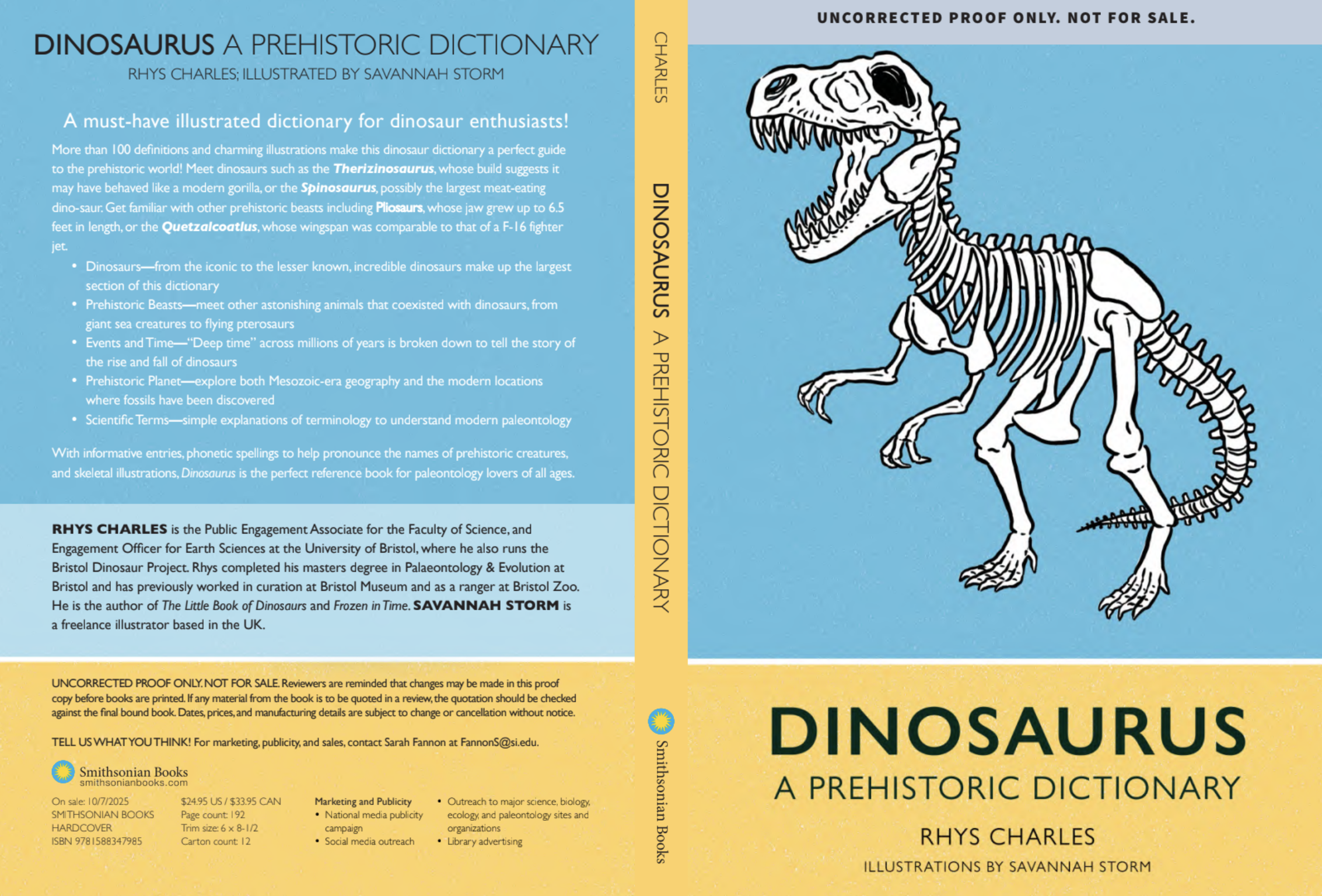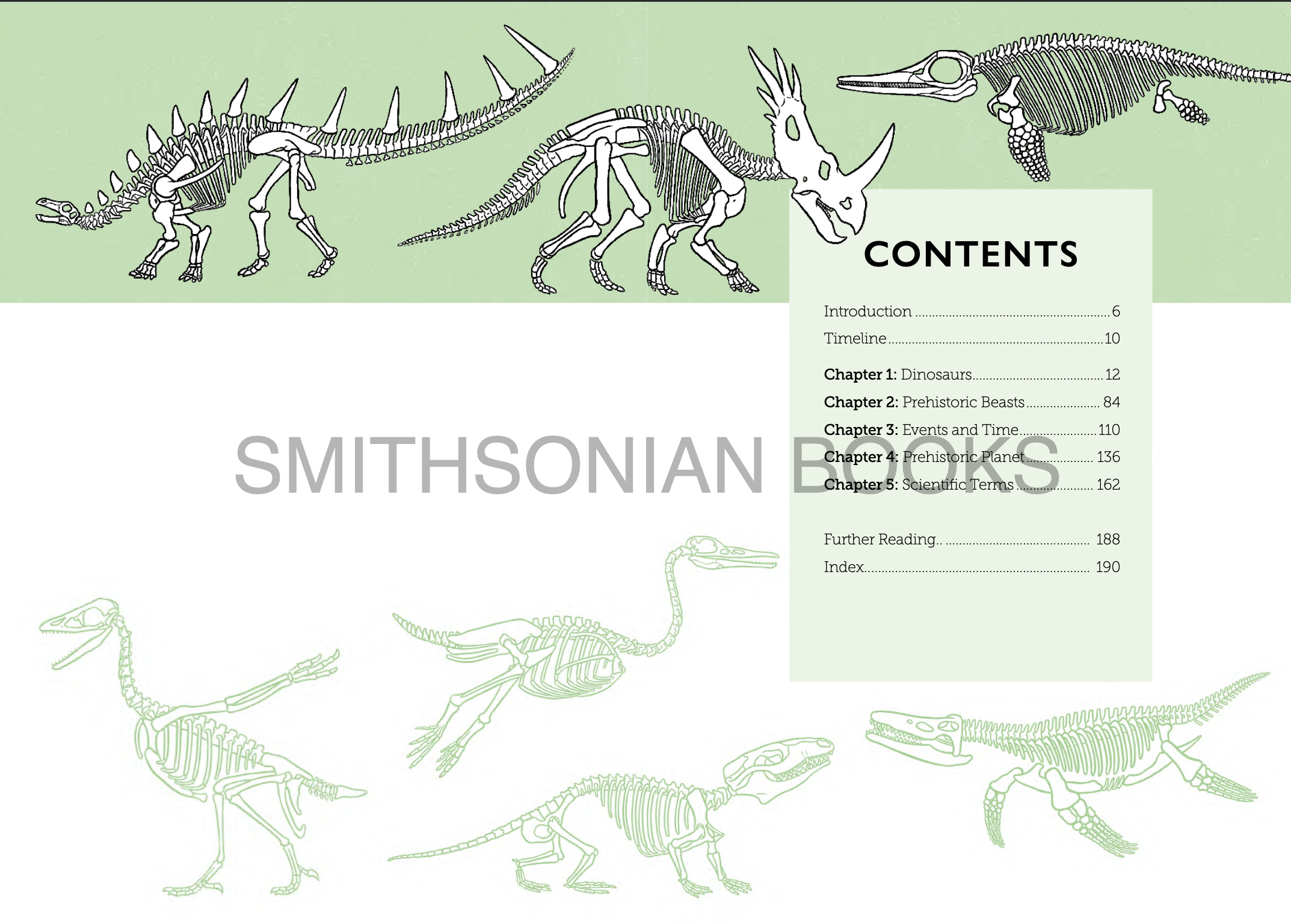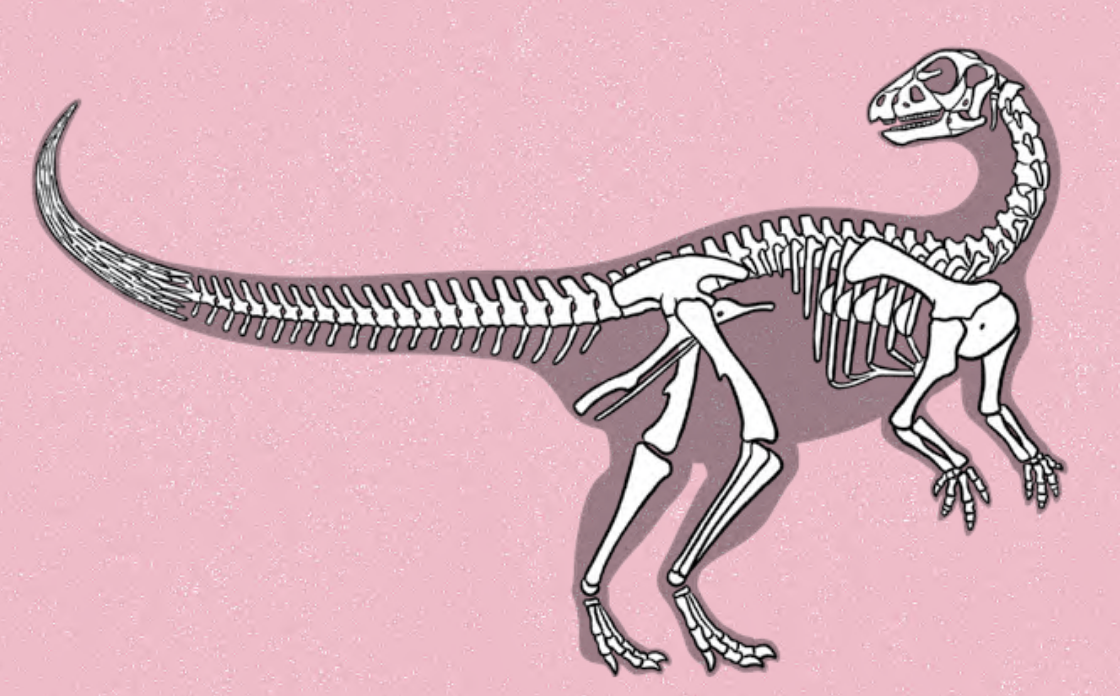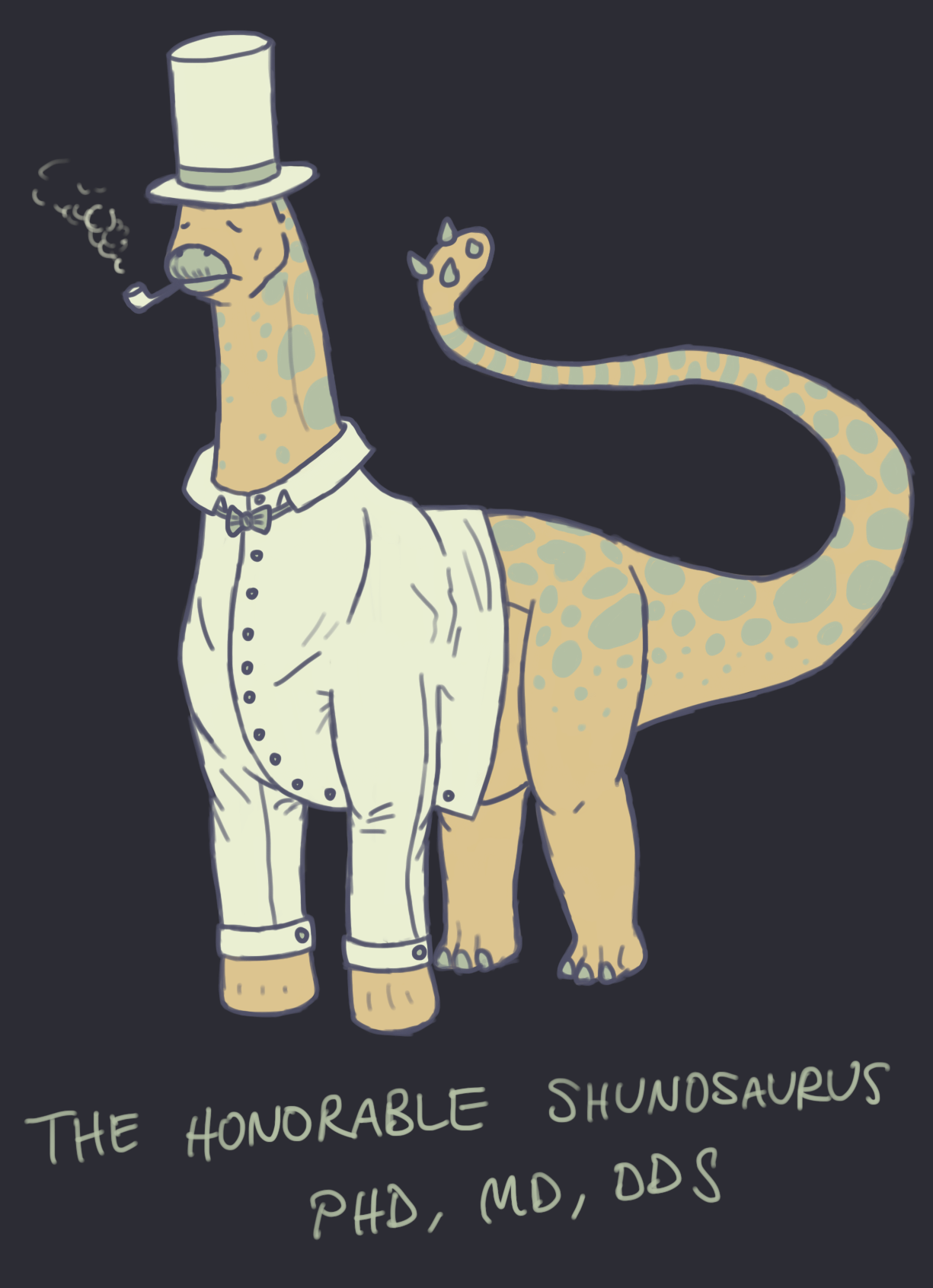I was recently contacted by someone from Smithsonian Books to see if I’d be interested in doing a review of a book that’s coming out soon, Dinosaurus by Rhys Charles. I responded that I was happy to, but my review would be completely honest. From the blurb, I was not optimistic.

“The Therizinosaurus”? And why use this generic theropod skeletal, which is missing its fibula, its pubis, and its temporal and antorbital fenestrae, has pronated hands, appears to only have one coracoid, and has a shoulder girdle that is connected entirely wrongly, as the cover image? (Is it supposed to be Tyrannosaurus?)
However, turning the (digital) page, I was pleasantly surprised: the rest of the skeletals are a lot more accurate. And the animals shown are quite varied, with previews of Hesperornis the penguin-like Cretaceous toothed bird with toothpick arms, what’s probably supposed to be Morganucodon, a Mesozoic mammaliform, and on the next page, a rauisuchian and a rhynchosaur. We’ll find out if I was right later in the dictionary!

I’ll probably stop posting screenshots at this point, though, since the book isn’t out yet. You’ll have to just trust my descriptions of things.
Bottom line up front: This book is a confusing mix of up-to-the-minute research and elementary errors. I learned quite a few new things while reading it, which is what I look for in a book (if I didn’t, that means it doesn’t fill any new purpose in the market beyond things I’ve already read). But it’s also riddled with grammatical, spelling, and a few taxonomy mistakes. Maybe the author is dyslexic and the proofreader isn’t a paleontologist and therefore didn’t catch the taxonomy stuff? But it seems like the spelling/grammar stuff should’ve been flagged at some point…
It’s also unclear who the audience is supposed to be. It doesn’t seem to be for children - it’s pretty dense and there are no life depictions, just skeletals. I guess that means the book will likely age better. But it also makes it more difficult to visualize the dinosaurs in life. I think if a small kid were reading it, they would probably think dinosaurs were just walking skeletons! But the book is also not super in-depth, nor does it have a pop science-like narrative structure. So… who’s expected to read this? The book is fairly pretty, though, with attractive skeletals and nice pastel colors. Maybe people will buy it just based on that. Maybe it’s intended for precocious children?
In the rest of this post, I’ll go through each section and give an opinion on each, with more attention paid to the dinosaur section than the others.
Dinosaurs: nit by nit
The first entry in the dictionary is Aerosteon, a Cretaceous megaraptorid famous for having preserved pockets in some of its bones that air sacs, part of a birdlike respiratory system, would have filled in life. This is a fun genus to highlight, and a good one to start with, since dinosaurs’ relationship with birds is important and not every reader would know it. The skeletal is also much more accurate than the cover image, thankfully. However, I have a couple nits to pick. The text refers to dinosaurs and birds each as “species” rather than groups, clades, or families. And the text doesn’t tell us when this dinosaur is from and who it’s related to. Its relations are maybe less important in this case, as megaraptorids have been very difficult to place among theropods. But I think having a sense for when each genus lived is useful for understanding the overall arc of dinosaur evolution, especially since the immediately preceding page had a geologic time scale on it. Also, a super minor nit - each entry has a “pronunciation guide”, and in this case it’s “AIR-OS-TEE-ON”. To me, this isn’t very helpful, as I can’t tell if “os” is supposed to be pronounced like the British “arse” or the Japanese “osu”, and I also can’t tell where the emphasis is supposed to lie. But…eh, whatever.
The next genus is Albertosaurus, which the text says is “lighter and leaner” than its southern cousin T. rex and thrived across a wide swath of North America. All good. But this entry has some spelling and grammar issues. It says it’s part of the “Tyrannosauroidae” family (should be Tyrannosauridae), switches from “it” to “they” halfway through a sentence, and calls intraspecific combat “dinosaur-on-dinosaur hunting”.
After Allosaurus comes Anchiornis, which is a neat one to include because of the fossilized pigment. The silhouette around the skeletal shows shaggy feathers, which is accurate. There are a few more grammatical / writing style issues here, though. “Anchiornis, or Anchiornis huxleyi to give the species its full name [cringe], was denominated [cringe] in honor of Thomas Henry Huxley, a nineteenth-century biologist who was one of the first champions of Darwin’s theory of natural selection. It was also Huxley who, in 1868, became the first to suggest that birds were in fact types [sic] of dinosaur”.
Ankylosaurus gets a whole page to itself (previous entries were each half a page). This entry mentions Victoria Arbour’s work on trying to determine whether the clubs were more often used in intraspecific combat or against other species, which is a neat bit of very recent research to include. It also mentions the time period, life habits, and contemporary dinosaurs of Ankylosaurus, which is nice to include and lacking in some of the other entries. One nit: there’s a sidebar that has a detail iso view of the tail club, but provides no new information about the club (and even reuses the same skeletal on the same page, just reflected left/right).
Argentinosaurus’s entry is pretty good, mentioning how it’s one of the largest to ever live but how determining that accurately is a difficult process due to the fragmentary nature of the remains. And then it goes and says that Argentinosaurus was “around…94,492 kg”. Um. What. This is because they just directly converted 93 imperial tons to kilograms and then didn’t round. *cries in significant digits*
In Deinonychus’s entry, Dromaeosauridae is misspelled as “Dromeosauridae”, there’s a typo (“North of America” instead of “of North America”), and the dinosaur is reported to have been six feet tall (it was closer to three).
I like Dilophosaurus’s entry. It’s basically what I wrote for my pocket alphabestiary.
In Diplodocus’s entry, which is another full-pager, there’s kind of a massive malapropism: “niche portioning” instead of niche partitioning. It’s neat that they included the bit about skin impressions further along in the entry, but amateurish to call them “diplodocuses”.
Edmontosaurus’s entry is generally a good one. This guy is up to date on the latest research, as he mentions a particular fossil with soft tissue that’s still being worked on today. But again, calling them “Edmontosaurs” shows ignorance…
Another wrong word used: calling Guanlong’s later tyrannosaurid relatives “ancestors”. Pretty sure the author meant “descendants”.
I’m learning interesting things about Herrerasaurus and Giganotosaurus I didn’t know, like there are some isolated lower jaws of the former that are twice as long as the best-known skull, indicating maybe they could get a lot larger, and that the latter had a notable chin that might have helped distribute bite force. Jobaria’s entry is also interesting, explaining the special adaptations sauropods needed to move around their enormous necks: cervical ribs!
The text claims Lambeosaurus was one of the largest non-sauropod dinosaurs. This is not true at all. Lambeosaurus was around three tons; the contemporary Parasaurolophus was bigger at five tons, and the truly biggest non-sauropods like Shantungosaurus and Ledumahadi would have reached ten to twelve tons. I have a whole blog post about it!
Back to the weird pronunciations… I’m pretty sure Masiakasaurus is supposed to be pronounced “ma-SHEE-ka-so-rus”, not what the book proposes, “MAS-EE-A-KA-SAW-RUS”. And Megalosaurus’s pronunciation has a typo and is rendered as “MH-GA-LOW-SAW-RUS”.
I’m glad Oryctodromeus got an entry. Also, Ouranosaurus and Neovenator being used to highlight different paleobiomes is cool. Calling multiple pachycephalosaurs “Pachycephalosaurs” and missing the italics on “protoceratops” (group names should not be italicized, genus and species names should be) is less cool.
Okay, here’s one more illicit screenshot:

I was really confused by what those paddle-shaped things coming off the ribs are, since I haven’t noticed this in any skeletals I’ve seen before, and they’re not mentioned in the text. Qantassaurus is known from very limited material, not including ribs, so most skeletal reconstructions of it do not include these features. However, other bipedal ornithopods like Hypsilophodon and Talenkauen are known to have had them, so it’s definitely possible Qantassaurus did too. They’re called intercostal plates, and likely served a similar purpose to a feature known from many modern birds called uncinate processes, which are spiky bits coming off the ribs that allow for increased muscle attachment to facilitate efficient breathing. However, it seems like ornithopod dinosaurs evolved these plates independently from birds. The more you know…! The entry doesn’t tell you what those plates are, though.
Shunosaurus’s entry unsurprisingly discusses its distinctive tail club. But I didn’t really think about the fact that it lacks the “handle” reinforcement that ankylosaurs developed, and therefore would have been much less effective as a weapon - flinging it around would have dislocated the animal’s vertebrae! Therefore, maybe it wasn’t a weapon at all, but some kind of sensory organ or display structure. If you’re not familiar with what Shunosaurus looks like, here’s a weird cartoon I did of Shunosaurus back in 2019.

Unfortunately, we whiplash from those two thought-provoking entries back into questionable territory with the next entry, Sinosauropteryx. The text claims that it “was the first feathered dinosaur ever found” and that it at last “confirmed” that birds were dinosaurs. This is very untrue. Archaeopteryx was the first feathered dinosaur ever found, way back in 1861, over a century before Sinosauropteryx, and scientific consensus held that birds were dinosaurs since at least the Dinosaur Renaissance and the discovery of Deinonychus, though the idea was floated as far back as the mid-1800s. In fact, Sinosauropteryx was the first non-maniraptoran dinosaur - that is, one not in the direct lineage leading to birds - found with preserved feathers, and it was important in showing that feathers were not strictly a bird-line trait, but a broader dinosaur thing.
The Tyrannosaurus entry is…meh. A bite force of 40,000N? What does that even mean? No one is familiar with Newtons. It also states, “In order to balance out its heavy skull, the arms of T. rex were much smaller relative to its body size.” This is kind of a weird thing to say, implying that either big arms would’ve put its center of mass too far forward, or that it spent too many evolution points beefing up its head and had none left for the arms. Either way, it doesn’t really follow. Spinosaurus, for example, was much more unbalanced-looking and seems to have been able to walk just fine. And there’s nothing stopping an animal from having multiple weapons or multiple limbs that do approximately the same thing, as in the four-winged Microraptor or the shoulder-spiked and tail-spiked Gigantspinosaurus. Rather, Tyrannosaurus had short arms because short arms were better for whatever it was doing. Also, while most of the time it’s referred to correctly as T. rex, there is one instance of “T-rex”.
The Velociraptor full-page entry is also meh. While it gets the basics right (small, feathered, with mention of the “Fighting Dinosaurs” fossil), it doesn’t say why Jurassic Park depicted them as much larger and as pack hunters. Maybe the author didn’t know why. But there is a good reason: the much larger Deinonychus used to be considered by some to be a junior synonym of Velociraptor, so the animals in the book and film were based on Deinonychus. And many Deinonychus specimens were found in one place alongside the ornithopod Tenontosaurus, inspiring the pack-hunting theory. It’s very likely that some raptors were social and some antisocial, like how lions and tigers have opposite habits even though they’re in the same genus.
I’d never heard of Xuanhanosaurus before reading this, and it has quite the interesting scientific story. Apparently someone suggested that this very normal theropod-shaped theropod was quadrupedal back in the ’70s (it wasn’t). I wonder why? A fun tidbit.
Prehistoric Beasts
This section includes not just individual genera, but entries for whole groups, including birds. I personally would’ve put the birds in the dinosaur section, but the author explains why they made that decision in the intro to this section, so I guess it’s okay. This section is a lot shorter than the Dinosaurs section and hits a lot of the highlights, but there are some animals whose skeletals were teased in the beginning of the book that are notably missing, like rauisuchians, rhynchosaurs, and mammoths. Overall, this section gives a decent look at Mesozoic non-dinosaur animals and I have fewer complaints about the information presented. But it’s still not exactly a page-turner.
Nits:
- Archaeopteryx’s silhouetted flight feathers are way too short. Perhaps this is just because longer ones wouldn’t have fit on the page? But it gives an inaccurate idea of how wings work…
- Hesperornithes did not diverge from non-avian dinosaurs later than birds did; that would imply that they are not within Avialae, which they are. They were certainly an early bird branch, but they were birds. Also, the demonym for a member of Hesperornithes is hesperornithean, not “Hesperornithe”.
- Grammatical and spelling errors: in Morganucodon’s entry, “analysis have [sic] shown”; in the Pliosaurs entry, “did not fair [sic] so well”; in Xiphactinus’s, teeth are called “nashers [sic]”.
- Quetzalcoatlus is missing one of its phalanges.
- There’s some confusion over different Repenomamus specimens. The text says “a specimen was found that appeared to have been attacking a juvenile dinosaur (a Psittacosaurus).” But there are actually two specimens of Repenomamus found in association with Psittacosaurus remains: one with a juvenile in its stomach, and one attacking an adult.
- For some reason the Sarcosuchus skeletal is missing all its ribs?
- Inconsistency in singulars, plurals, and group names. If Hesperornithes is an entry, then the entry for marine crocs should be called Thalattosuchia, not Thalattosuchians. Also in the Thalattosuchian entry: the text states that live birth “is a rare trait among reptiles”, which is not true; squamates have evolved ovovivipary dozens of times. It is a rare trait among archosaurs, which is probably what the author meant to say…
Events And Time
The geologic time scale is done well and covers not just an overview of each period but is also punctuated by important events, like extinctions and radiations. My only major complaint here is that the skeletals at the top of each section are not described within the section. Here’s where they’re using the rauisuchian and rhynchosaur skeletals, but the reader would not know what they were supposed to represent. A couple nits: the Mesozoic Marine Revolution is incorrectly called the “Marine Mesozoic Revolution”, and the Paleogene is incorrectly called an epoch (it’s a period).
Prehistoric Planet
In addition to the definitions of important landmasses and oceans throughout time, this section goes over many important fossil localities. I personally think that’s cool, but would a typical reader? Maybe this book is for adults after all. Nits: Edmontonia in the Dinosaur Provincial Park entry is misspelled as “Edmontia” and Phoenix (a tectonic plate) is misspelled as “Pheonix” in the Panthalassa entry.
Scientific Terms
This section is a nice thing to include, as it goes into more detail than just a glossary would. The paleontology concepts it includes are important ones, well-chosen in my opinion. And it ends with a “further reading” section that cites the work of a lot of the best leading modern paleontologists, like Steve Brusatte, Darren Naish, and Mark Witton. Nits: “Scarring” is misspelled as “scaring” in the Pathology entry, Megalosaurus is not italicized in the Wastebasket Taxa entry, and the picture of a phylogenetic tree in the Phylogeny entry is a bit confused, where the artist thought that the last branches needed to be connected into boxes for some reason.
Conclusion
Overall, I was pleasantly surprised by the quality and recency of the information presented in this book, but was unpleasantly surprised at the shoddy editing. I suppose the author is a scientist and dinosaur enthusiast first and a writer second. I guess if you’re looking for more dinosaur books to buy, this isn’t a bad option, depending on how much nits like the ones listed above bother you. Maybe if the book isn’t in print yet, my complaints will get fixed before it does! I’d give this three and a half stars. Solid effort, mediocre execution.

